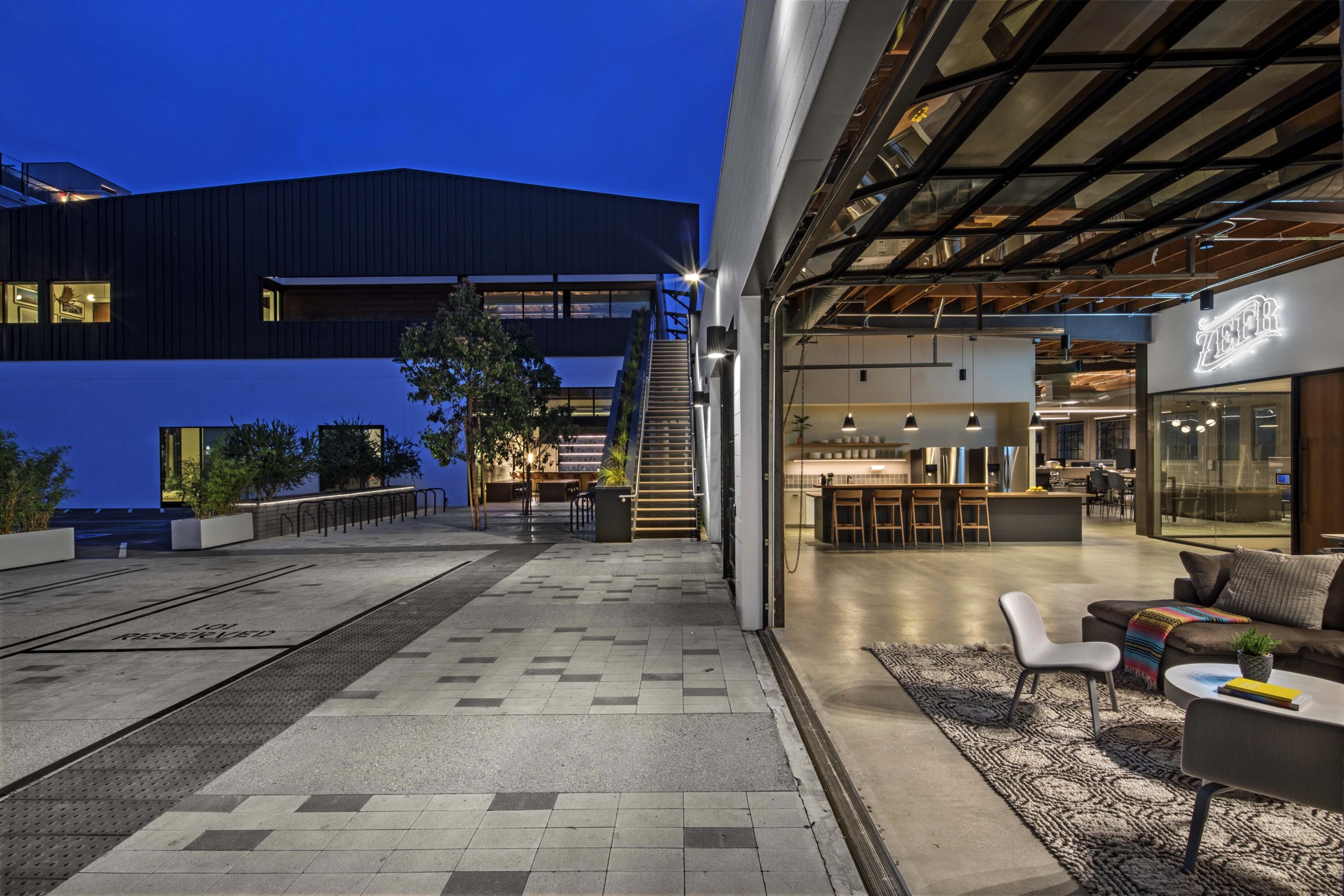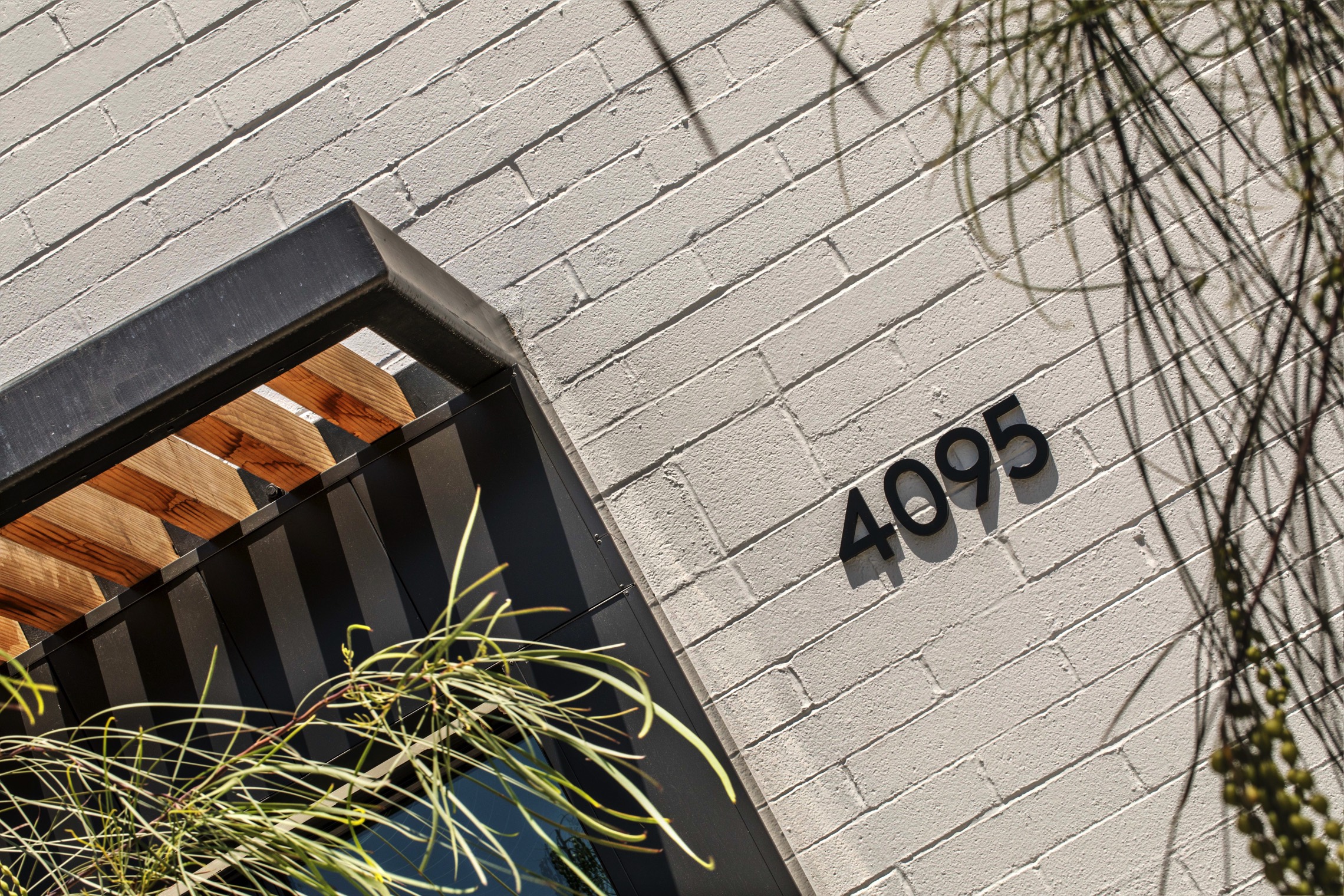When The Bradmore Group approached Rapt with the hope of transforming six distinct industrial buildings into a cohesive multi-tenant campus, Rapt knew exactly what to do: combine the two lots they were on – one to the east, one to the west – and make them feel whole.

The private equity real estate firm held the properties for decades before deciding to redevelop them. Instead of converting the property to multi-family units – as is custom in the surrounding area – they chose to follow their expertise in commercial real estate and embrace the new wave of tech and media in the LA area, establishing office space that caters to young, up-and-coming creatives.
With them Rapt first completed a comprehensive site analysis. From there they decided to prioritize highlighting the indoor-outdoor connection and unify the campus’s disparate parts. Rapt chose to work with key original features – like exposed brick and masonry – while providing a facelift to the existing non-descript buildings that’ve been around since the 1950s.
The original structures were stripped back to their bare finishes and left exposed, so that a mix of textures and layers interplay. Masonry walls were repainted to unify the color palette, and clean metal finishes polish the look. Perforated surfaces add extra texture.

Partnering with a landscape architect and structural engineer, Rapt established ground-level and second-story outdoor spaces. Solid walls were opened up with windows and skylights, and a continuous path framed by plants winds its way from one end of the campus to the other. New doors on adjacent buildings allow tenants to meet outside, drift in and out of their office spaces, and enjoy the temperate Southern California climate. Two fully furnished roof decks provide views of the entire campus, and numerous ground-level patios offer a chance to catch a little sun.
Together this all opens up previously closed-off, disconnected spaces, establishing clear sightlines from inside to outside and building to building, revealing activity that would otherwise happen behind closed doors. Luring people outside and inspiring them to connect, it interjects life into the space and encourages tenants to cross paths all day long – fueling the kind of interactions that inspire creative work.
Altogether the campus improvements were compelling enough that The Bradmore Group itself chose to relocate to one of the buildings on the campus, leaving their long-time home base in Santa Monica. They’re joined by several other companies who’ve made a home there – and who leased the buildings before the project was complete, to The Bradmore Group’s delight.